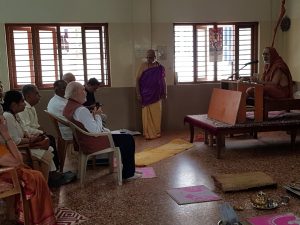“Bhakti” in common parlance is generally taken to mean a sort of Master – slave relationship of a seeker towards a superior Guru/Master/Lord/God, an attitude that in a way does reinforce duality.
Historically speaking, Bhakti as a cult took root in India after the Muslim invasions. The Abrahamic monotheistic religions with their proselytizing spirit attracted the masses offering the promises of a personal God who would fulfill their wants. Perhaps to counter this, indigenous Bhakti cults developed and continue to do so today.
The Advaita scriptural texts, strictly speaking, do say that devotional approach to a personal deity is an inferior path for Enlightenment. Further, some of them explicitly state that the devotee has to be a “Shiva” himself in order to worship Shiva. Yogavaasishta says a Vishnu only can truly worship a Vishnu. The implication in these statements is that the devotee should lose the sense of being a separate individual from what is being worshiped – it insists on a total identity, Oneness, of the subject-object.
I feel that the techniques like meditation, Bhakti, rituals, pilgrimages etc. are useful at two levels to a seeker:
- Bhakti etc. will work as a sort of aid to train the mind in its ability to stay focused (instead of wavering) and unbiased (being aware of one’s own hidden prejudices). These two aspects sharpen the mind and make it ready to take up Self-inquiry on one’s own.
- Bhakti and other such techniques are useful once again at a later stage after the Advaitic message is completely ingested without any doubt but a seeker experiences some difficulty to abide constantly in Brahman. The mind out of its sheer old habit pulls him/her back to the lures of the world from unceasing abidance as Brahman. Using Bhakti and other such things as little crutches, it will be easy for the seeker then to come back to rest as Awareness instead of being driven by the vagaries of the mind.
From: Place of Bhakti in Advaita – The Reply to the Question, Jul 27, 2012





